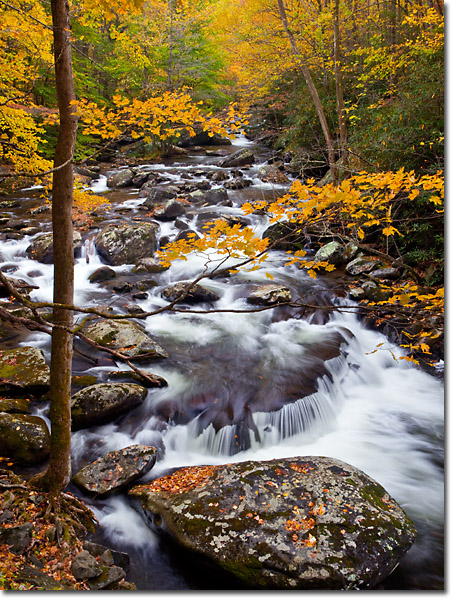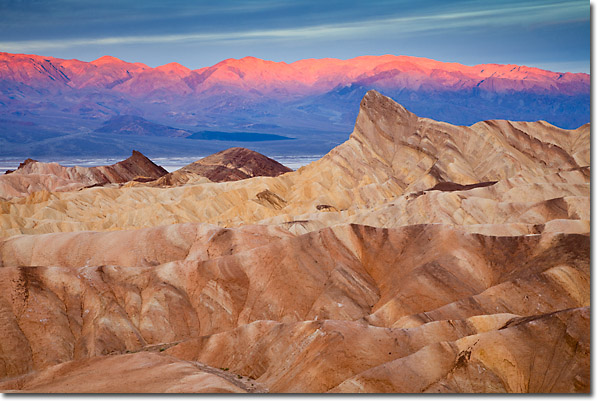A Righteous Set of Sticks |
I once lost a tripod in Montana’s Beartooth Mountains. I should say, for the sake of accuracy, I left it there by accident. Tripods don’t just walk off and get lost on their own.
Returning to the trailhead after an overnight backpacking trek, I tossed my gear into the rental car and drove away, leaving in my wake a perfectly good tripod in full view of the public parking area. I wasn’t even aware of this oversight until four hours and 200 miles later when a wave of intuitive dread fell over me. An inventory was performed and my fears were borne out.
The futile idea of driving all the way back to find it was quickly dismissed and replaced it with better one: I went to a bar. My tripod was just as likely to be found under a barstool at the Old Faithful Tavern as it would at a popular trailhead on an Indian summer weekend in mid-September.
The next morning, I dashed into Bozeman’s only camera shop and began inspecting their meager tripod selection. I needed something sturdy, practical, and cheap – enough support to get me through the next 9 days until my flight back East.
A salesman approached with a demeanor I recall being a bit too upbeat.
"Lookin’ for a tripod today, buddy?"
"Yeah. I lost mine while backpacking yesterday."
"Oh. I bet there’s a good story there," he said with a laugh.
"No story," I snapped back. "And it certainly wouldn’t be a good one if there was."
For nature photographers, having no tripod is pretty much…well, like not having a camera. In other words, it’s an essential piece of equipment. Yet for many beginners, a tripod remains the object of an intense love-hate relationship. They love it because they’ve been told they should love it, but they hate it because they really hate carrying and operating the wretched thing. Eventually, that relationship evolves into one of tolerance, soon followed by tepid acceptance, mild appreciation and finally, love.

Great Smoky Mountains National Park, Tennessee
The benefits of a tripod are patently obvious to most nature photographers and, as I mentioned, will become more obvious with time and experience. Camera stability will always be the primary benefit and cannot be overstated. No matter how steady-handed you are or how good you think your image stabilized lens or camera is, be assured that comparing results on a set of large prints will humble you.
Another often cited benefit of using a tripod regularly is that it slows the photographic process down, forcing you to think through your compositions in a more contemplative way. While I believe there’s plenty of truth buried in that notion, I do have to wonder how any device that forces you to do anything can be good for the creative process. Not using a tripod and being contemplative are not necessarily mutually exclusive deeds.
Nevertheless, for the beginning photographer, slowing down the process, if feasible, can only lead to better and yes, more contemplative results.
But a tripod can have many other non-conventional and under appreciated accruements that you’ll probably never read on the glossy pages of a product catalog.
For example, a tripod can be used to reach and remove a distracting limb or branch in mid-stream that you otherwise would have to get wet to reach. Who hasn’t performed this little trick before? I always grasp the tripod firmly near the head, and telescope a leg (always one) to the desired distance. It sure beats a day’s worth of walking with soggy, squishy boots.
A tripod also functions as an adequate wading staff or trekking pole in a pinch. You’re missing out on much of your tripod’s hidden value if its never helped steady you while hiking a particularly steep descent or provided additional balance as you rock-hop from one stream bank to another.

Death Valley National Park, California
There are also some dark undertones of weaponry incorporated in its design, although you hope to never employ one in this capacity. I’ve not needed to fend off a crazed madman yet nor even a rabid squirrel for that matter. Perhaps the deterrent of being visibly armed with a tripod has something to do with that. Nevertheless, there have been two instances where I can recall needing to apply my tripod directly to a wild animal: a lovesick bison in Yellowstone and five-foot timber rattler in the Smoky Mountains.
The former simply invaded what I would consider my personal space and I used my tripod as a makeshift shield as I turned away each of her (his?) amorous advances. The latter was stretched out across a rocky section of a trail, peacefully soaking in the late summer sun. I carefully lifted and relocated her to a safer location, since the odds of the next hiking party being as charitable as I were not nearly as good. When it comes to dealing with snakes, humans usually kill first and ask questions later.
You might learn rather quickly that having a tripod immediately grants you professional status in the presence of certain company. In the vicinity of tourists, be prepared to be asked if you are, in fact, a professional nature photographer and how can they become one too.
This misconception will be sure to present some complications from time to time. A certain state park in Florida, for example, requires photographers to have a commercial use permit (for a nominal fee, of course) if one is in possession of a tripod. The inference being, that if you’re determined enough to lug the thing around in the standard 94-degree heat and overbearing humidity, there must be a damned good reason to do so and they want their fair share of whatever that reason is.
While leading a tour in Belize last winter, the guards at a classic Mayan archaeological site, Xunantunich, wouldn’t allow us to enter the premises with tripods. Not on the grounds of aesthetics, environmental impact, sacred tradition, or limited working space, but rather it was assumed we were a group of professionals and that was somehow a bad thing. The guards had semi-automatic machine guns (Publisher's note - there is no such thing as a "semi-automatic machine gun" but I'm giving Bernabe a pass on this one because I'm thoroughly enjoying the article anyway) so I didn’t feel it was an appropriate time to argue a point of principle. Instead, our group assembled some improvisational tripods from sticks and rocks and that seemed to get the job done well enough, considering the circumstances.

Xunantunich, Belize
Like my experience in Montana twelve years ago, you really learn to appreciate a tripod when you don’t have one.
At this moment, I am looking at several tripods leaning against a corner of my office – each with a specialized purpose. For example, there’s a compact, lightweight model for multi-day backpacking trips only. My everyday workhorse, however, is a Gitzo 1325 carbon fiber model that’s at least 8 years old and has since been discontinued by the manufacturer. It’s scarred, dinged, dented, taped up, rusted, and getting a little squeaky in the joints – not unlike its owner these days.
But I have no plans for a replacement, at least not until it completely succumbs to gravity and fails to stand on its own three legs. If leading a workshop or doing some private guiding, having gear that looks seasoned helps perpetuate that “steely-eyed mountain man” persona that citified clients like to project upon me, whether it’s accurate or not. Guides or workshop leaders who only carry spiffy, brand new gear should be viewed with a healthy dose of suspicion. Either they’re new to this game or you’re being overcharged.
During a workshop this past summer, a bright, personable young man in my group took one look at my heap of a tripod and casually stated, "Whoa, that’s one righteous set of sticks, dude."
I asked if I could steal that phrase for future use, if I gave him proper credit of course. Thanks Darren.
Comments on NPN nature photography articles? Send them to the editor. NPN members may also log in and leave their comments below.
 NPN Editor-in-Chief, Richard Bernabe has been a full-time professional nature photographer and writer since 2003. He's had thousands of publishing credits over the past 20 years and he regularly leads photography tours and workshops across the United States and internationally. Richard is a general partner with Mountain Trail Press and also offers regular Online Classes with NPN.
NPN Editor-in-Chief, Richard Bernabe has been a full-time professional nature photographer and writer since 2003. He's had thousands of publishing credits over the past 20 years and he regularly leads photography tours and workshops across the United States and internationally. Richard is a general partner with Mountain Trail Press and also offers regular Online Classes with NPN.
For more information about Richard's photography, be sure to visit his personal website, Richard Bernabe Photography.